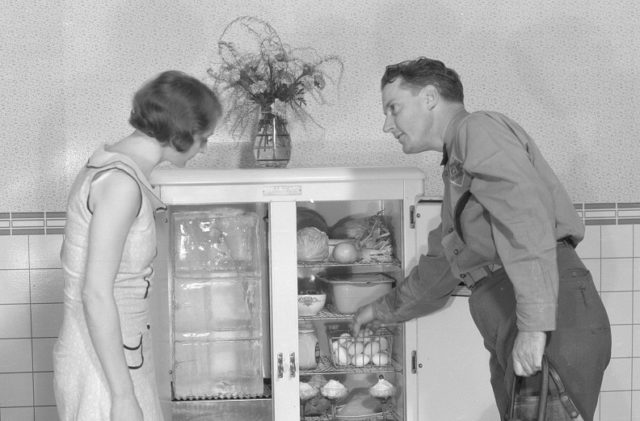Just imagine how it would be to live without electrical power! Total chaos, as we became so dependent on this power source that we can’t even imagine life without it. But in case there would be a natural disaster or another survival scenario, would you know what to do and how to replace electricity? Just think about your ancestors for a second and that fact that they managed to live without electricity or found a way to solve the lack of it. The best example is to take a look at the alternatives they found for a refrigerator, an appliance that is present in our everyday lives.
Solutions for keeping food cold in case of no electricity.
Here’s five ways to do that:
Go underground. One idea they had is that you must go deep underground in order to keep your food cool. For this purpose, caves or a well are the perfect place for a natural way of preserving food. Milk products, meat and other foods have been proven to resist rather well in these conditions. Some people living in the countryside prefer this method instead of using a refrigerator, calling it a root cellar. The solution is easier than you might think.
The ice box. The ice box may sound like a modern invention, but the basic idea behind it traces its origins ages ago. The solution we are suggesting doesn’t involve the ice chest you’d take with you on a picnic. But an actual place in the kitchen, a separate room, preferably underground, where ice is stored – an ice house. Harvesting ice in the wintertime, from lakes and using straw and sawdust to store it in a well-insulated area, for use in warmer times, may sound complicated. But for some people in the right circumstances might just be perfect!
















The only problem with any of these is humidity. If the air is more than 49 percent humid, you wont cool a thing.
Dried or cured foods, beans can be reheated twice a day to boiling and this will keep them at least 2 days. Sun dried fruits veggies herbs and meats. Can be portion controlled and rehydrate what you need..many other options exsist.
Winter was ice harvest off the frozen lake. Huge draft Horses would pull sledges full of blocks to the icehouse that was lined with sawdust and served the whole lakefront community year by year. First time I saw a real horse, and touched it too! Some of that same ice made its way to our kitchen, where it kept milk, eggs, et al, cold. It rested in its special place at the bottom of the icebox, and its meltwater was caught in an enamel bucket below. I wish we could go back to that technology, we didn’t pay a cent for refrigeration because my dad would be out there sawing blocks of ice out of the lake.
NZ Coolers consist of a wire screened two shelved hinged door box I. Which food is placed. On top of this stand is placed a bucket of water and a cloth with its Center put into the water of the bucket and then draped over thsides of the Cooler. Works wonderfully.
I dislike these pages because they think they need multiple pages with massive advertising. I just back out of these types of pages that seem to want to have you click on multiple pages to keep the ads in front of you. Nope, just click out.
Fresh meat wraped in clean kitchen tovel soaked in vinegar in or out icebox for a day or two.
We kept meat wrapped in peace of cloth soaked in vinegar for 24 hours in ice box.